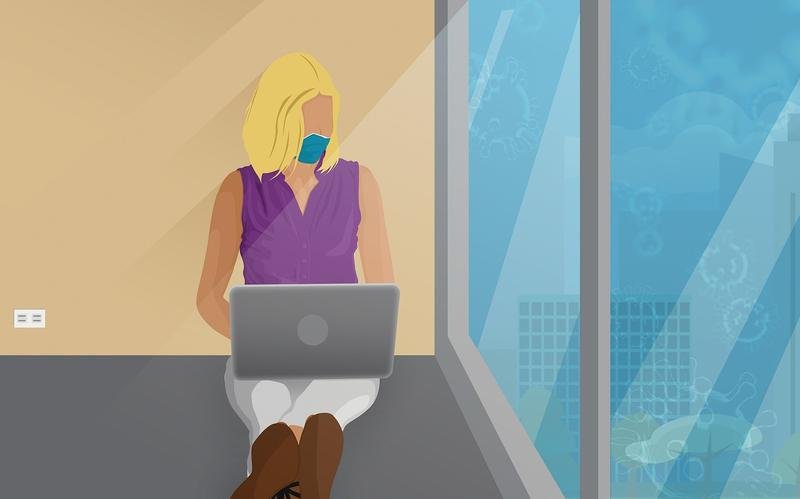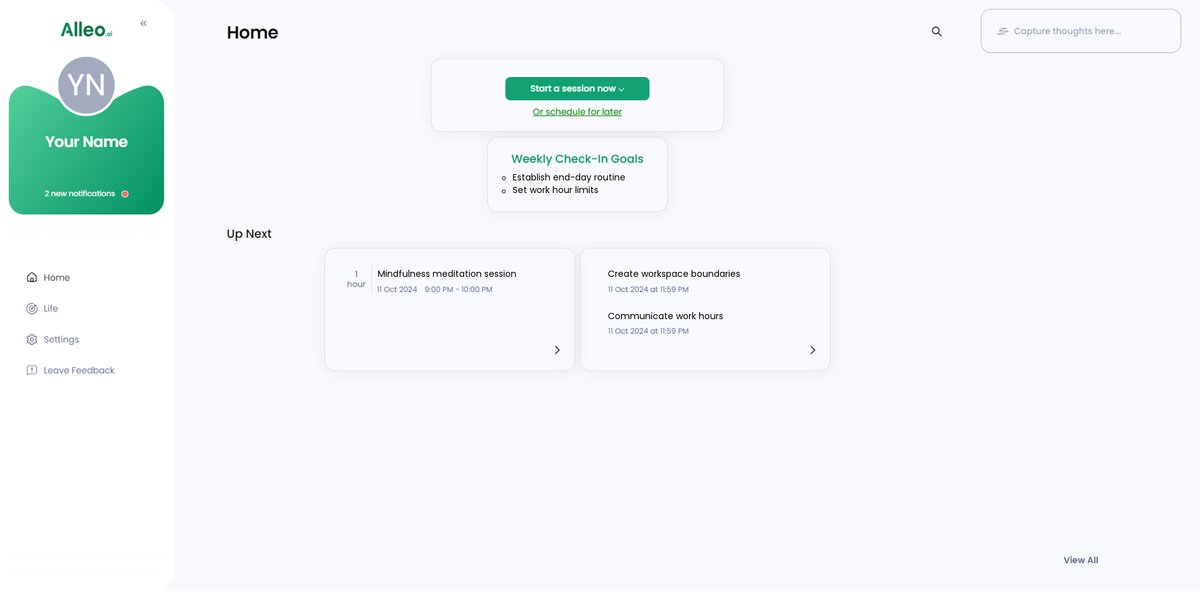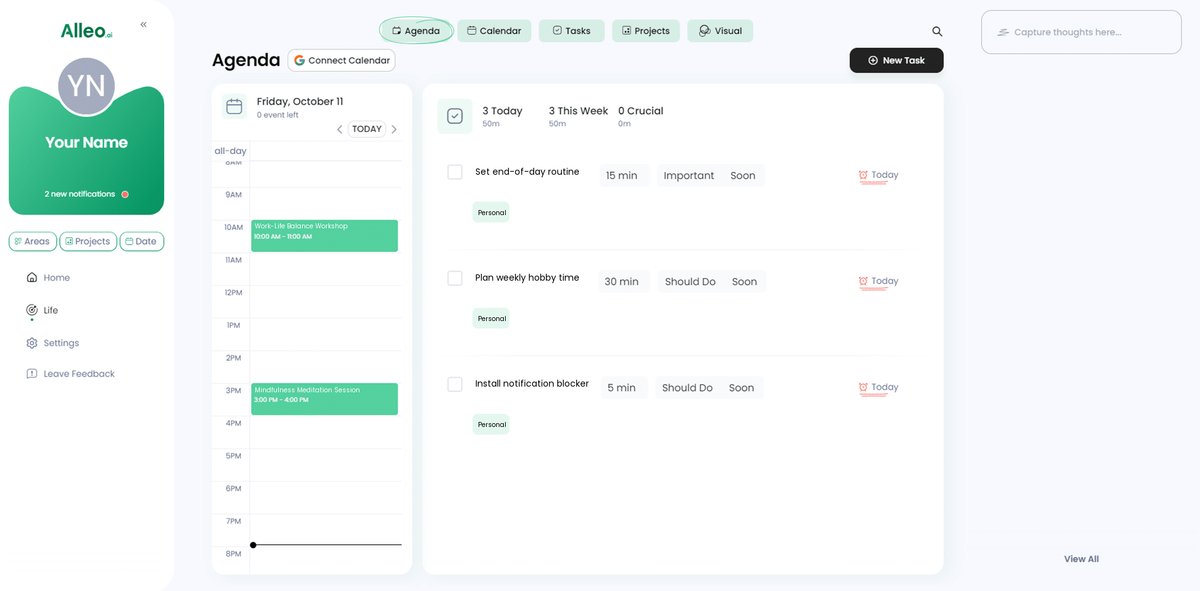7 Powerful Strategies to Disconnect from Work and Reclaim Your Personal Time
Are you constantly thinking about work, even during your personal time? Do you struggle to disconnect from work after hours?
As a life coach, I’ve helped many professionals navigate these challenges. In my experience, the inability to disconnect from work can severely impact your well-being and work-life balance.
In this article, you’ll discover seven actionable strategies to establish a clear work-life balance. These tips will help you reclaim your personal time, boost your productivity, and effectively disconnect from work after hours. We’ll explore digital detox techniques, stress reduction methods, and after-work relaxation ideas.
Let’s dive in and explore these time management skills and mindfulness practices for professionals.
The Intrusion of Work into Personal Time
It’s all too common for work thoughts to spill over into your personal time, making it challenging to disconnect from work after hours. Many clients initially struggle with this intrusion, leading to stress and burnout.
In my experience, the inability to disconnect can result in poor health and decreased productivity. You may find yourself constantly checking emails or ruminating about unfinished tasks, hindering your work-life balance.
This constant connection to work can be exhausting. It leaves you feeling like there’s no true break, emphasizing the need for effective time management skills and digital detox techniques.
Without clear boundaries and stress reduction methods, your well-being and personal relationships suffer. This widespread issue needs addressing to reclaim your personal life and improve work-related mental health.
Effective Strategies to Disconnect from Work After Hours
Overcoming this challenge to disconnect from work after hours requires a few key steps. Here are the main areas to focus on to make progress and improve your work-life balance:
- Establish a strict end-of-day routine: Set consistent work hours and end them with a ritual to help you unplug from technology.
- Create physical boundaries for work materials: Keep work items out of personal spaces to aid in setting healthy boundaries.
- Practice mindfulness and meditation techniques: Dedicate time daily to mindfulness practices for professionals and relaxation.
- Set clear expectations with colleagues: Communicate your work hours and set boundaries for after-work contact to improve work-related mental health.
- Engage in absorbing non-work-related hobbies: Find and schedule after-work relaxation ideas you enjoy outside of work.
- Use technology to enforce work-hour limits: Utilize apps to block work notifications after hours as part of your digital detox techniques.
- Schedule enjoyable post-work activities daily: Plan fun activities with family and friends as part of your stress reduction methods and creating a post-work routine.
Let’s dive in to these time management skills that will help you disconnect from work after hours!
1: Establish a strict end-of-day routine
Setting a consistent end-of-day routine is crucial to help you disconnect from work after hours.
Actionable Steps:
- Set a specific end time: Decide on a set time each day to finish work and stick to it, enhancing your work-life balance.
- Create an end-of-day ritual: Perform a simple task, like shutting down your computer or tidying your workspace, to mark the end of your workday and begin your digital detox.
- Reflect and plan: Spend a few minutes reviewing your accomplishments and planning for the next day to clear your mind, incorporating mindfulness practices for professionals.
Explanation: Creating a strict end-of-day routine helps signal to your brain that the workday is over, reducing the urge to continue working and promoting effective time management skills.
This approach not only boosts productivity but also supports mental health by reducing stress and promoting relaxation. It’s an essential step in learning how to disconnect from work after hours.
For more insights, you may find this article on work-life balance useful.
Setting these boundaries will enhance your ability to enjoy your personal time fully and implement effective stress reduction methods.

2: Create physical boundaries for work materials
Creating physical boundaries for work materials helps you mentally disconnect from work after hours and separate work from personal life.
Actionable Steps:
- Designate a specific workspace: Choose one area in your home solely for work-related tasks to avoid mixing work and personal spaces, improving work-life balance.
- Store work items out of sight: At the end of each workday, put away your laptop and other work materials to signal that work is over, aiding in your digital detox.
- Use visual separation tools: Implement room dividers or close a door to create a clear physical boundary between work and personal areas, setting healthy boundaries.
Benefits of physical boundaries include:
- Improved focus during work hours
- Easier mental transition to personal time
- Reduced stress from constant work reminders
Explanation: Establishing physical boundaries for work materials minimizes work intrusions into your personal time, enhancing your ability to relax and recharge, which are essential stress reduction methods.
This practice not only improves focus when working but also promotes a healthier work-life balance. For more tips, you might find this article on separating work and personal life helpful.
Taking these steps will help you enjoy your personal space without constant reminders of work, allowing you to effectively disconnect from work after hours.
3: Practice mindfulness and meditation techniques
Practicing mindfulness and meditation can significantly help you disconnect from work after hours and enhance your work-life balance.
Actionable Steps:
- Dedicate time for meditation daily: Spend 10-15 minutes each day on mindfulness meditation to calm your mind and improve work-related mental health.
- Practice deep breathing exercises: Use deep breathing techniques to manage stress and bring yourself into the present moment, aiding in after-work relaxation.
- Use guided meditation apps: Utilize apps designed to assist with mindfulness practices for professionals and relaxation for a more structured approach to disconnecting from work.
Explanation: Incorporating mindfulness and meditation into your routine helps reduce stress and improve focus, essential for maintaining work-life balance.
By regularly practicing these techniques, you can create a mental buffer between work and personal life, effectively helping you disconnect from work after hours.
For additional insights, consider exploring this article on mindfulness practices.
These steps will aid in achieving a balanced and fulfilling personal life, supporting your efforts to unplug from technology and set healthy boundaries between work and personal time.

4: Set clear expectations with colleagues
Setting clear expectations with colleagues is essential to maintaining your work-life balance and ensuring smooth communication, especially when you need to disconnect from work after hours.
Actionable Steps:
- Communicate your work hours: Clearly inform your team about your working hours and availability to manage expectations effectively and improve time management skills.
- Set boundaries for after-hours communication: Use tools like do-not-disturb mode on your devices to minimize interruptions outside of work hours, promoting digital detox techniques.
- Establish emergency protocols: Define what constitutes an urgent matter and set specific procedures for handling these situations after hours, helping you unplug from technology.
Key benefits of setting clear expectations:
- Reduced stress from unnecessary after-hours interruptions, aiding in stress reduction methods
- Improved work-life balance
- Enhanced productivity during work hours
Explanation: Establishing clear communication guidelines helps manage expectations and reduces unnecessary after-hours disruptions, allowing you to disconnect from work after hours effectively.
This practice ensures that your colleagues respect your personal time, allowing you to unwind and recharge with after-work relaxation ideas.
For more insights, you might find this article on setting boundaries with colleagues helpful.
These steps will help you create a healthier work-life balance and improve overall productivity, while incorporating mindfulness practices for professionals.
5: Engage in absorbing non-work-related hobbies
Engaging in hobbies outside of work is crucial for maintaining a healthy work-life balance and helping you disconnect from work after hours.
Actionable Steps:
- Schedule regular time for hobbies: Dedicate a specific time each week to engage in activities you enjoy, such as painting or gardening, as part of your after-work relaxation ideas.
- Join a hobby group or club: Participate in groups related to your interests to stay motivated and connected, aiding in your digital detox techniques.
- Experiment with new activities: Try out different hobbies to discover what you enjoy most and keep things interesting, which can be an effective stress reduction method.
Explanation: Incorporating hobbies into your routine helps you disconnect from work after hours and reduces stress.
Engaging in enjoyable activities provides a mental break, which boosts overall well-being and productivity. For more insights, you might find this article on finding fulfilling hobbies helpful.
Exploring new hobbies can also introduce you to new social circles, enriching your personal life and improving work-related mental health.

6: Use technology to enforce work-hour limits
Leveraging technology is crucial to maintaining boundaries between work and personal time, helping you disconnect from work after hours.
Actionable Steps:
- Utilize apps that block work notifications: Set up apps or features on your devices to mute notifications after work hours, aiding in your digital detox.
- Set automatic email responses: Create out-of-office replies to inform senders of your offline status and when you’ll respond, supporting your work-life balance.
- Use time-tracking software: Implement tools to monitor and limit your work hours, ensuring you don’t overextend and can focus on after-work relaxation.
Explanation: These steps help ensure that work doesn’t intrude on your personal time, promoting healthy boundaries.
By using technology, you can more effectively manage your work-life balance and reduce stress, improving your work-related mental health.
For more tips on managing work notifications, consider reading this article on effective notification management strategies.
Taking control of your digital environment will make it easier to disconnect from work after hours and enjoy your personal time, enhancing your mindfulness practices as a professional.

7: Schedule enjoyable post-work activities daily
Scheduling enjoyable activities every day after work is essential for maintaining a balanced life, reducing stress, and helping you disconnect from work after hours.
Actionable Steps:
- Plan fun outings or activities with loved ones: Arrange regular meetups or activities with family or friends to unwind and relax, improving work-life balance.
- Incorporate exercise or relaxation routines: Dedicate time each evening to physical activities or relaxation exercises to recharge and practice mindfulness for professionals.
- Treat yourself to small rewards: After completing your workday, indulge in a favorite hobby or activity as a reward, aiding in stress reduction.
Examples of enjoyable post-work activities:
- Taking a leisurely walk in nature as part of a digital detox
- Cooking a new recipe with family to improve work-related mental health
- Reading a chapter of an engaging book as an after-work relaxation idea
Explanation: By planning enjoyable activities, you create a clear distinction between work and personal life, which helps you relax, recharge, and disconnect from work after hours.
Engaging in these activities can significantly improve your mental health and productivity. For more ideas, you might find this article on effective post-work activities helpful.
These practices will help you maintain a healthy work-life balance, set healthy boundaries, and enjoy your personal time more fully while improving your time management skills.
Partner with Alleo to Achieve Work-Life Balance
We’ve discussed the difficulties of disconnecting from work after hours and the steps to overcome them. But did you know Alleo can help streamline this process for you, offering work-life balance tips and digital detox techniques?
With Alleo, you can set up an account and create a personalized plan effortlessly. Alleo’s AI coach provides tailored coaching sessions just like a human coach, ensuring you stay on track with stress reduction methods and after-work relaxation ideas.
The coach follows up on your progress, handles changes, and keeps you accountable via text and push notifications, helping you set healthy boundaries and improve time management skills.
Alleo offers a free 14-day trial, requiring no credit card, so you can experience the benefits firsthand, including mindfulness practices for professionals and creating a post-work routine.
Ready to get started for free and learn how to disconnect from work after hours?
Let me show you how to unplug from technology and improve your work-related mental health!
Step 1: Log In or Create Your Account
To begin your journey towards better work-life balance, log in to your Alleo account or create a new one to access personalized AI coaching that will help you implement the strategies discussed in this article.

Step 2: Choose Your Focus Area
Click on “Building better habits and routines” to start addressing your work-life balance challenges, as establishing consistent habits is key to disconnecting from work and reclaiming your personal time.

Step 3: Select “Personal” as Your Focus Area
Choose “Personal” as your focus area in Alleo to directly address work-life balance issues and learn strategies for disconnecting from work during your personal time. This selection will provide tailored guidance on establishing boundaries, creating post-work routines, and engaging in fulfilling activities outside of your professional life.

Step 4: Starting a Coaching Session
Begin your journey with Alleo by initiating an intake session, where you’ll work with our AI coach to create a personalized plan for achieving better work-life balance and implementing the disconnection strategies discussed in this article.

Step 5: Viewing and Managing Goals After the Session
After your coaching session, open the Alleo app to find your discussed goals conveniently displayed on the home page, allowing you to easily track and manage your progress towards achieving work-life balance.

Step 6: Adding events to your calendar or app
Use the app’s calendar feature to schedule and track your post-work activities, helping you maintain a healthy work-life balance and monitor your progress in disconnecting from work.

Final Thoughts on Disconnecting from Work
Taking the steps to disconnect from work after hours can truly transform your life. You’ve learned effective strategies to establish boundaries and improve work-related mental health.
It’s not easy, but it is possible to achieve a better work-life balance.
Remember, finding balance is essential for your well-being. By implementing these work-life balance tips, you can reclaim your personal time and create a post-work routine.
As your guide, I encourage you to try these stress reduction methods and digital detox techniques.
Trust me, the benefits of disconnecting from work are worth it.
And don’t forget, Alleo is here to help. Our AI coach can support you in achieving a healthy work-life balance and mastering time management skills.
Start your free 14-day trial with Alleo today. You’ll be glad you did as you learn to unplug from technology and embrace mindfulness practices for professionals.